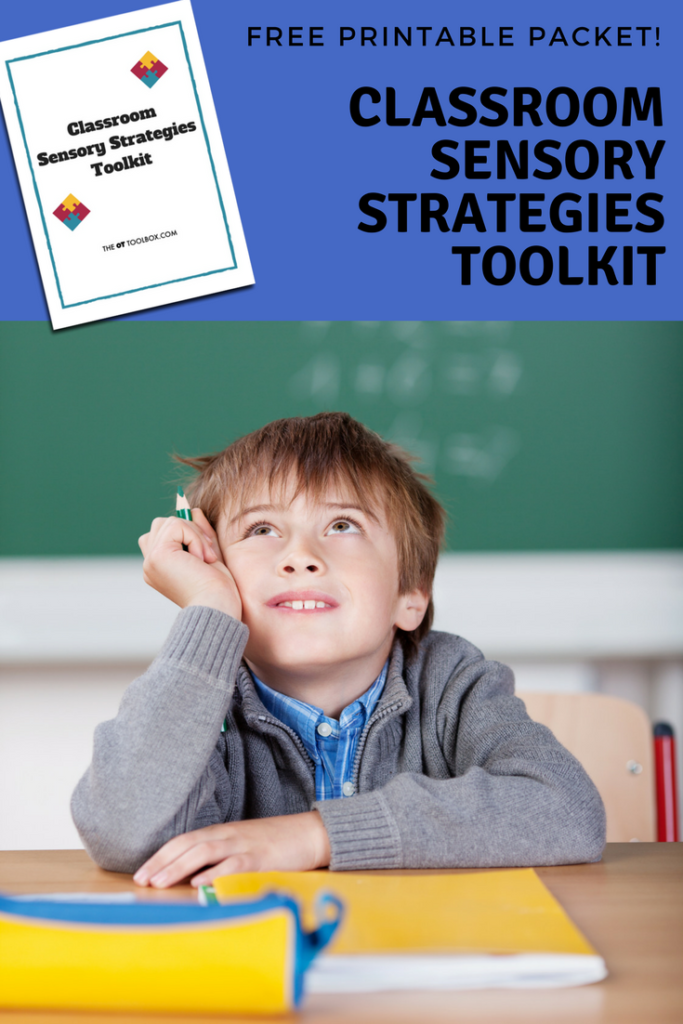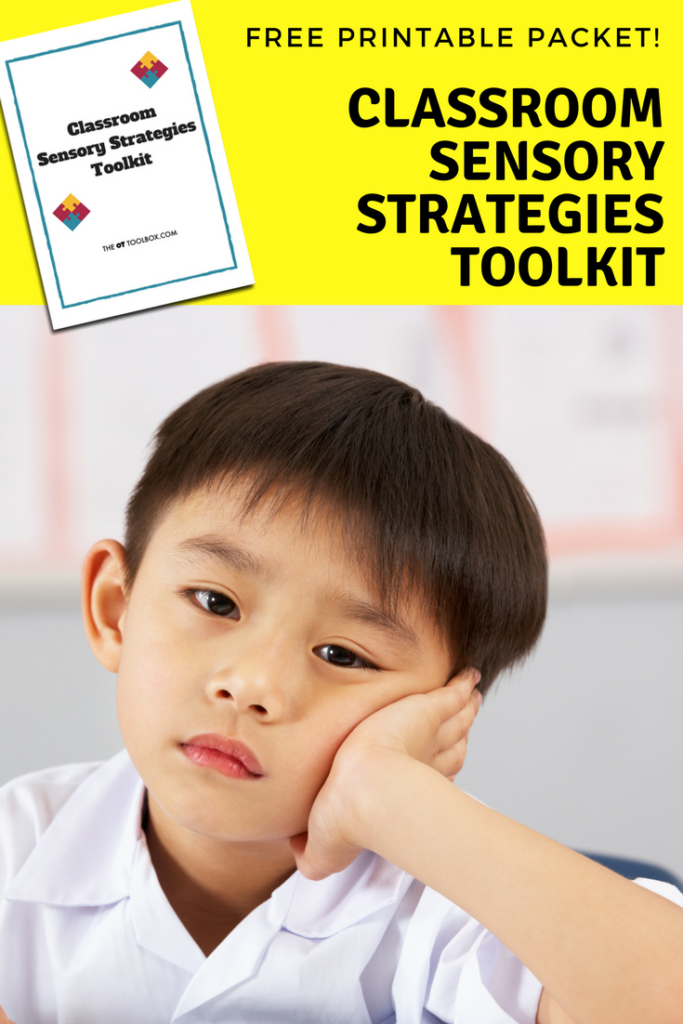Here on The OT Toolbox, we’ve shared a lot of information about addressing sensory processing needs in the classroom environment. We’ve shared sensory strategies for the school-based OT. We’ve talked about sensory diets in the classroom. So often, kids with sensory processing challenges struggle in the school environment. And, we’ve talked about calm-down strategies that can be used in the classroom.
Today, we’ve got a big resource for anyone who lives with, loves, or works with a child with sensory processing needs. These sensory strategies can be used in schools by occupational therapists, teachers, parents, administrators, or anyone who advocates for a child with sensory needs.
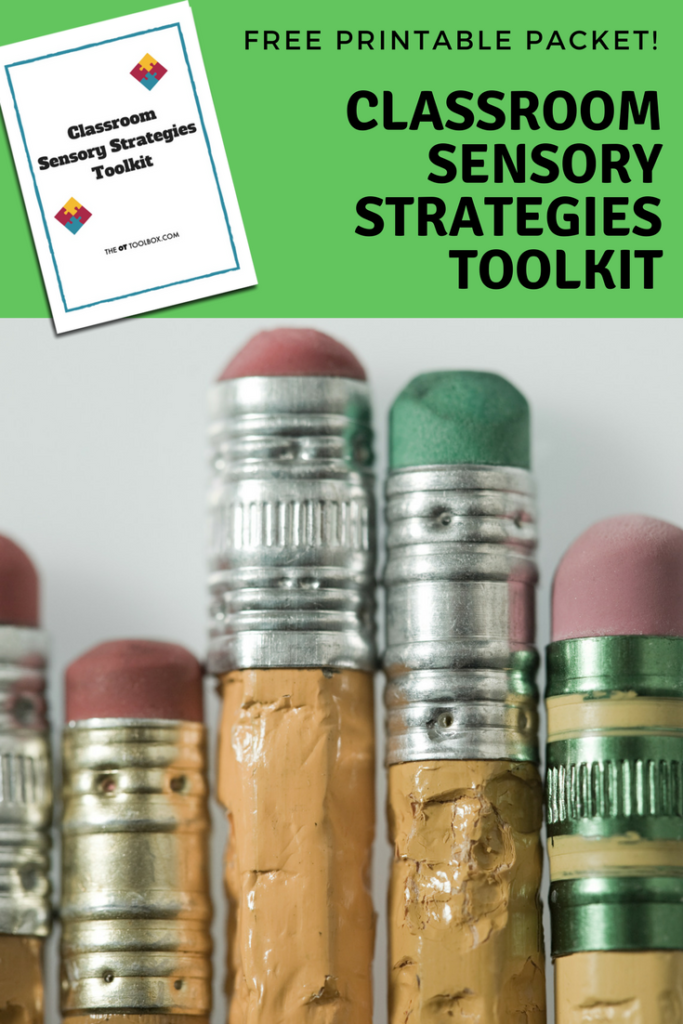
Sensory Strategies in Schools
As a caregiver or parent, it is exhausting to see the challenges your child faces, while ticking through the laundry list of strategies and still witnessing the sensory breakdowns. Parents are the advocate for addressing their child’s needs. They are looking for resources to share.
Therapists are challenged to find tactics that will be carried over while meeting functional goals. We strive to create streamlined suggestions that will be used at home and in the midst of a busy classroom.
Often times, teachers are the middleman when it comes to sensory issues. They are dealing with curriculum requirements, little time, and demands of a full classroom. Time, space, and resources are limited in the classroom. Teachers struggle with meeting sensory needs and children who “feed off” other students.
Strategies for addressing or preventing sensory meltdowns are needed before they happen!
Strategies for addressing or preventing sensory meltdowns are needed before they happen!
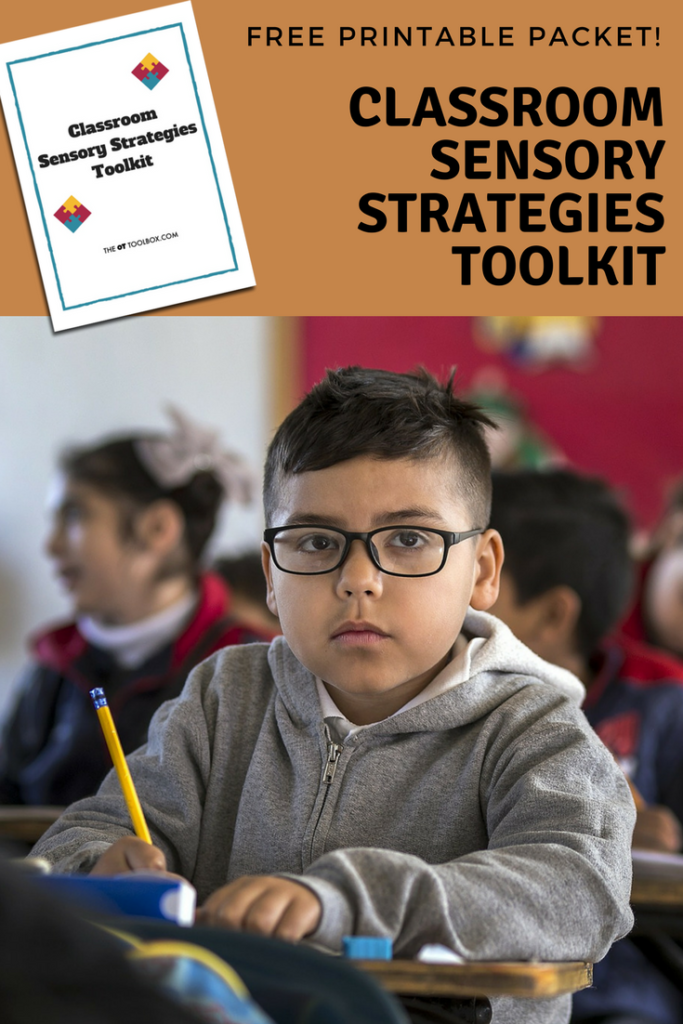
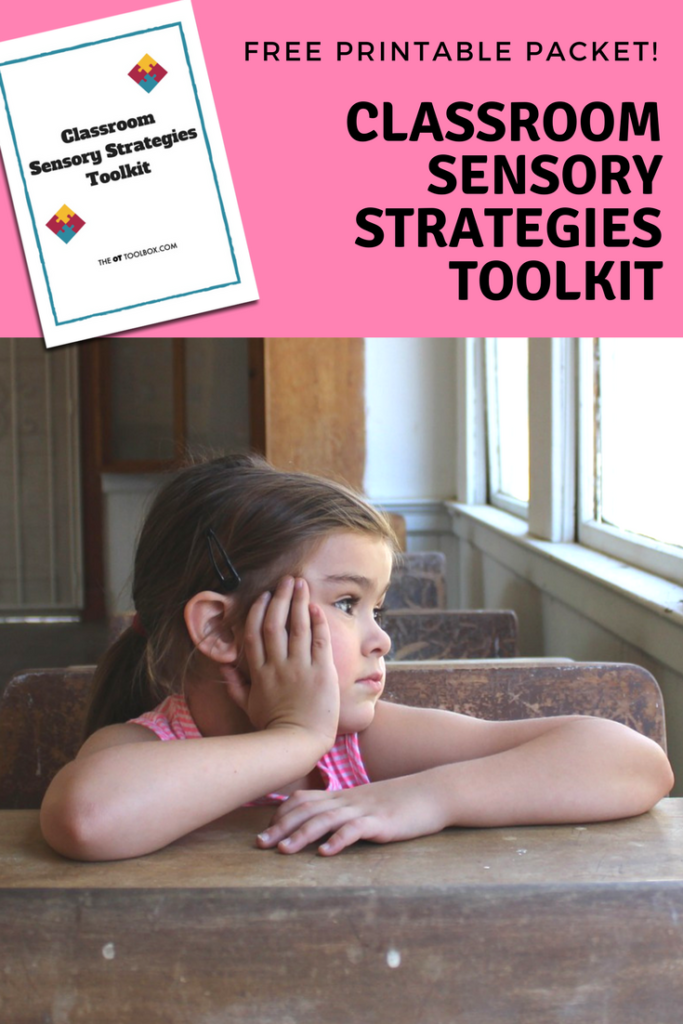
Because of these challenges, the classroom can be a tricky environment for addressing the needs of students, incorporating strategies, and addressing behaviors related to sensory needs. If any of these struggles sound familiar, know that you are not alone!
You’re striving to find and use the sensory strategies that students need and to put them into place in easy-to-understand handouts where recommended tools can be highlighted. You’re seeking information about why students are acting the way they are and how to help them to improve learning, attention, regulation, and emotional needs so that educational needs are met.
That’s where the Classroom Sensory Strategy Toolkit comes in.
The Classroom Sensory Strategy Toolkit is a printable packet of resources and handouts that can be used by teachers, parents, and therapists. Whether you are looking for a handout to explain sensory strategies, or a tool for advocating for your child, the Classroom Sensory Strategy Toolkit has got you covered.
And it’s free for you to print off and use again and again.
In the Classroom Sensory Strategy Toolkit, you’ll find:
-
Fidgeting Tools for the Classroom
-
Adapted Seating Strategies for the Classroom
-
Self-Regulation in the Classroom
-
105 Calm-down Strategies for the Classroom
-
Chewing Tools for Classroom Needs
-
45 Organizing Tools for Classroom Needs
-
Indoor Recess Sensory Diet Cards
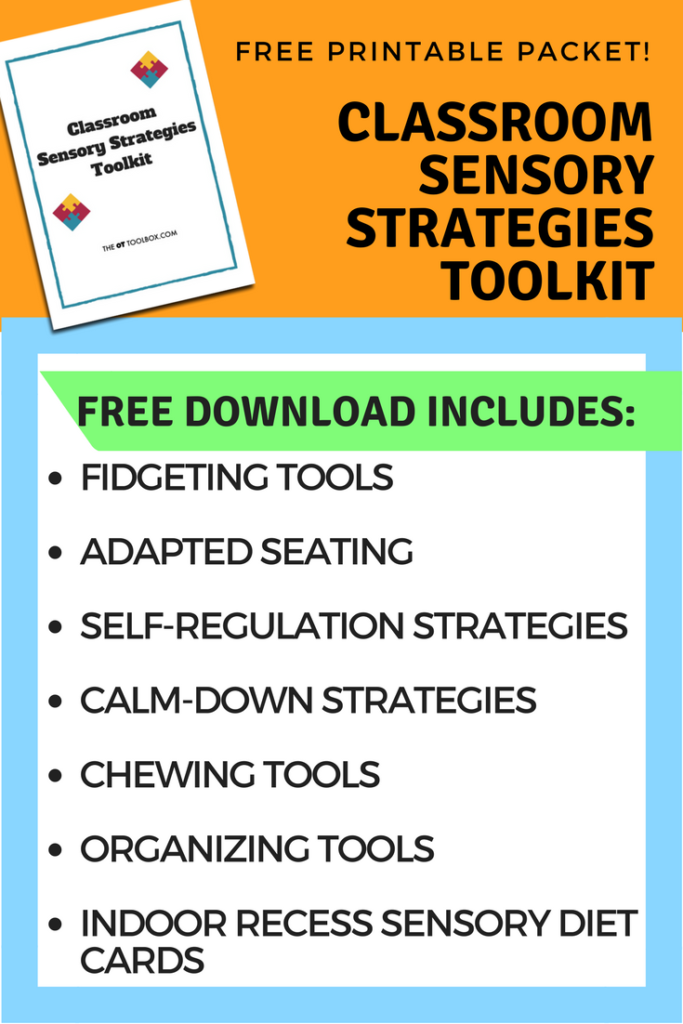
Here are a few ways that the Classroom Sensory Strategy Toolkit can address much-needed skills of our children/students/clients with sensory needs:
-
Science tells us there are more kids with processing needs than ever before. Schools are responding with a better understanding of how to help students using sensory input within the school day.
-
The Sensory Strategy Toolkit is a helpful tool for incorporating sensory needs within the educational environment as supports and tools that kids need.
-
Sensory processing challenges in kids are baffling! Having a set of sensory tools that can be used in the classroom is powerful to teachers, parents, and therapists.
-
Sensory processing issues cause stress, motivation, and challenges for the whole family. Having a toolkit of sensory strategies for the classroom can help.
-
Self-regulation in the school environment can derail the whole classroom from effective learning. Use the calm-down strategies and self-regulation pieces in the toolkit and have the information you need to address these challenges.
-
Those who work in the school environment struggle with a limited budget for addressing sensory needs. These strategies use equipment that is on hand in the classroom.
-
The toolkit is appropriate for preschool through teenage years and older and the strategies can be modified to meet the needs of each individual.
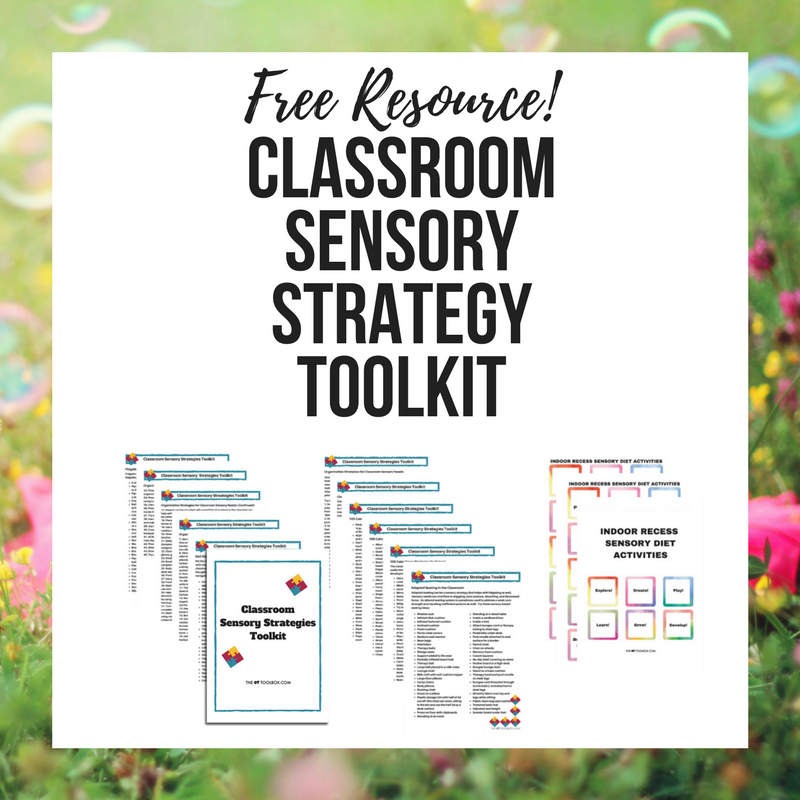
Be sure to grab the Classroom Sensory Strategy Toolkit and start addressing those classroom sensory challenges!
CLICK HERE to get the Classroom Sensory Strategy Toolkit.
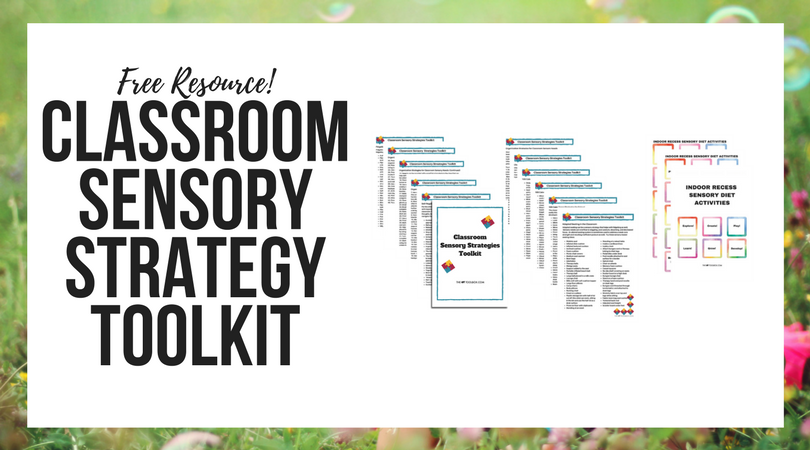
P.S. Stay tuned because in just a couple of days, we’ll have another free resource for you. It’s all about sensory activities like those in a sensory diet and how they can be used to address attention and focus in kids. And what’s awesome is that the free printable resource coming your way will help the kids you parent, teach, or serve in therapy to work on attention using sensory strategies, even if they don’t have a sensory diet in place.
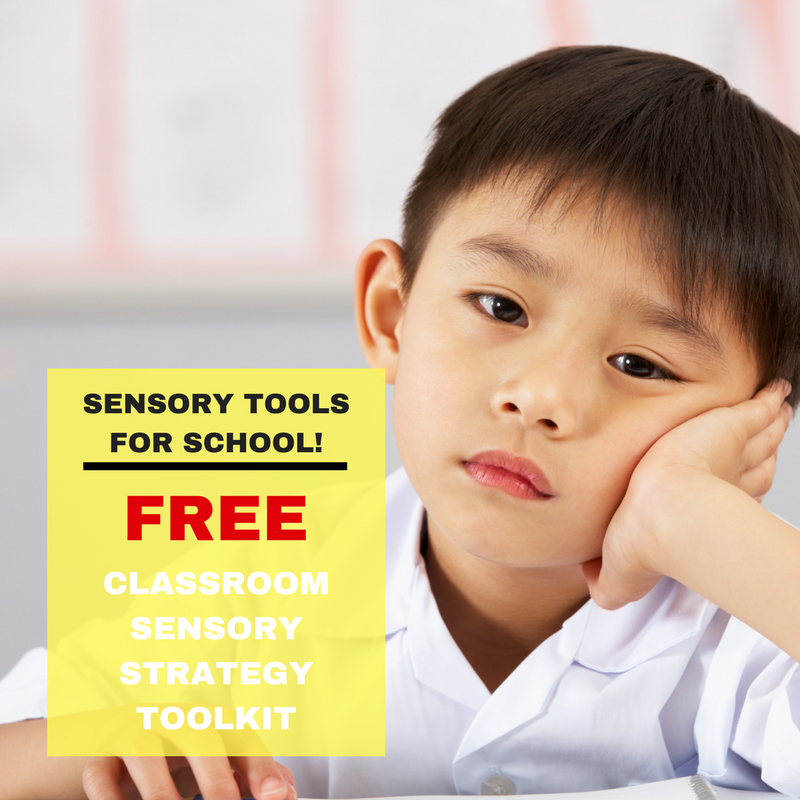

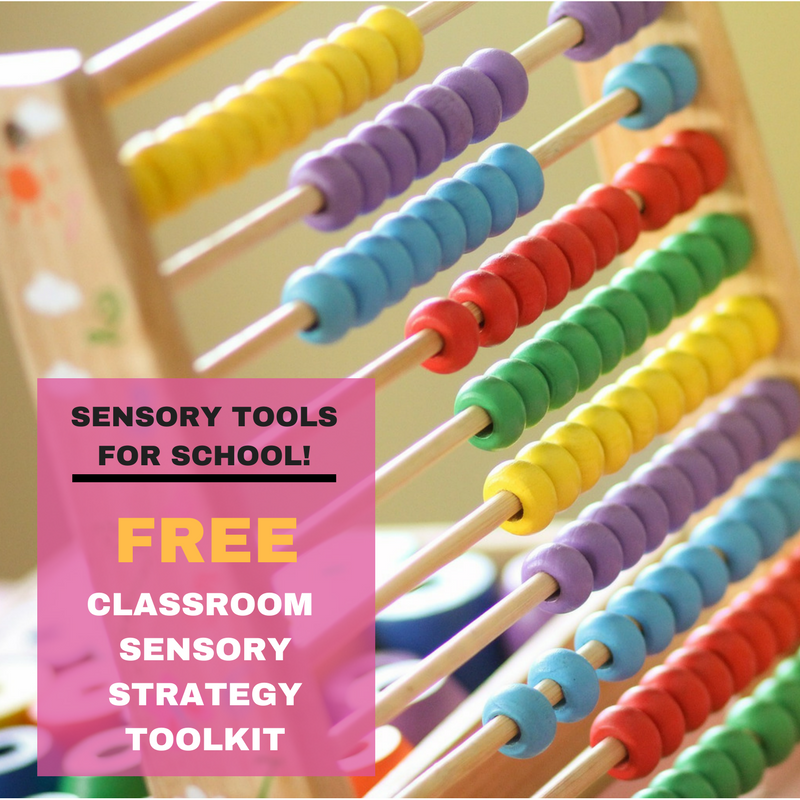

Colleen Beck, OTR/L has been an occupational therapist since 2000, working in school-based, hand therapy, outpatient peds, EI, and SNF. Colleen created The OT Toolbox to inspire therapists, teachers, and parents with easy and fun tools to help children thrive. Read her story about going from an OT making $3/hour (after paying for kids’ childcare) to a full-time OT resource creator for millions of readers. Want to collaborate? Send an email to contact@theottoolbox.com.
New Feature...DOWNLOAD THIS POST AS A PDF! CLICK HERE


